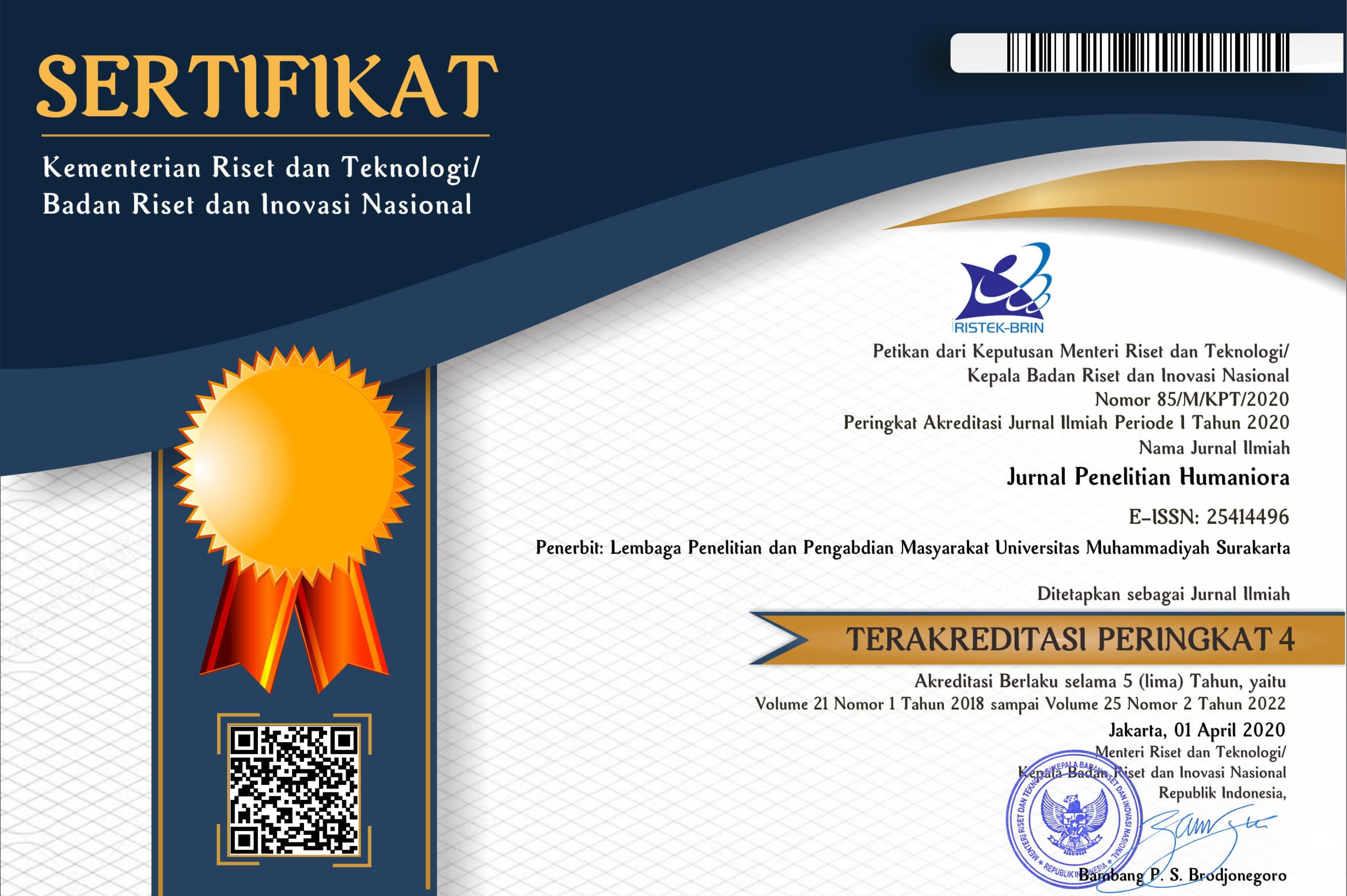AN ANALYSIS OF STUDENTS’ DIFFICULTIES IN SPEAKING ENGLISH AT LPK ISI PRINGSEWU
Garda Arif Wicaksono(1*)(1) Ahmad Dahlan University
(*) Corresponding Author
Abstract
Keywords
Full Text:
PDFReferences
Ameliani, A. N. (2019). Students ’ Difficulties in Grammar of Seventh Grade Junior High School 1 Magelang. Conference of English Language and Literature (CELL).
Asworo, C. W. (2019). The Analysis of Students’ Difficulties In Speaking English at the Tenth Grade of SMK N 2 Purworejo. Journal of English Education and Teaching, 3(4). https://doi.org/10.33369/jeet.3.4.533-538
Aydoǧan, H., & Akbarov, A. A. (2014). The four basic language skills, whole language & intergrated skill approach in mainstream university classrooms in Turkey. Mediterranean Journal of Social Sciences, 5(9). https://doi.org/10.5901/mjss.2014.v5n9p672
Kusumawardani, S. A., & Mardiyani, E. (2018). THE CORRELATION BETWEEN ENGLISH GRAMMAR COMPETENCE AND SPEAKING FLUENCY. PROJECT (Professional Journal of English Education), 1(6). https://doi.org/10.22460/project.v1i6.p724-733
Lestari Nurjanah, S. E., Mulyadi, D., & Wijayatiningsih, T. D. (2019). THE ANALYSIS OF SPEECHNOTE APPLICATION FOR MEASURING THE ACCURACY OF STUDENTS’ PRONOUNCIATION. Jurnal Lingua Idea, 10(1). https://doi.org/10.20884/1.jli.2019.10.1.1435
Pratiwi Dyah, P. C. (2021). Problems and Difficulties of Speaking At Muhammadiyah. Journal of English Education and Linguistics, 2(1).
Ramasari, M. (2017). Students Pronounciation Error Made in Speaking for General Communication. Linguistic, English Education and Art (LEEA) Journal, 1(1). https://doi.org/10.31539/leea.v1i1.32
Rao, P. (2019). The Importance of Speaking Skills in English Classrooms. Alford Council of International English & Literature Journal(ACIELJ), 2(2).
Rizky Setiawan, M., & Wiedarti, P. (2020). The effectiveness of quizlet application towards students’ motivation in learning vocabulary. Studies in English Language and Education, 7(1). https://doi.org/10.24815/siele.v7i1.15359
Sembiring, N., & Ginting, A. F. Y. (2016). An Analysis of Pronunciation Errors Made by the Fourth Semester Students of English Education Study Program at UNIKA. Jurnal Suluh Pendidikan FKIP-UHN, 3(1).
Susanto, A. (2017). THE TEACHING OF VOCABULARY: A PERSPECTIVE. Jurnal KATA, 1(2). https://doi.org/10.22216/jk.v1i2.2136
Yang, Y. I. J. (2014). Is speaking fluency strand necessary for the college students to develop in the EFL class? Theory and Practice in Language Studies, 4(2). https://doi.org/10.4304/tpls.4.2.225-231
Zuhriyah, M. (2017). Storytelling to Improve Students’ Speaking Skill. Jurnal Tadris Bahasa Inggris, 10(1).
Article Metrics
Abstract view(s): 1259 time(s)PDF: 1235 time(s)











